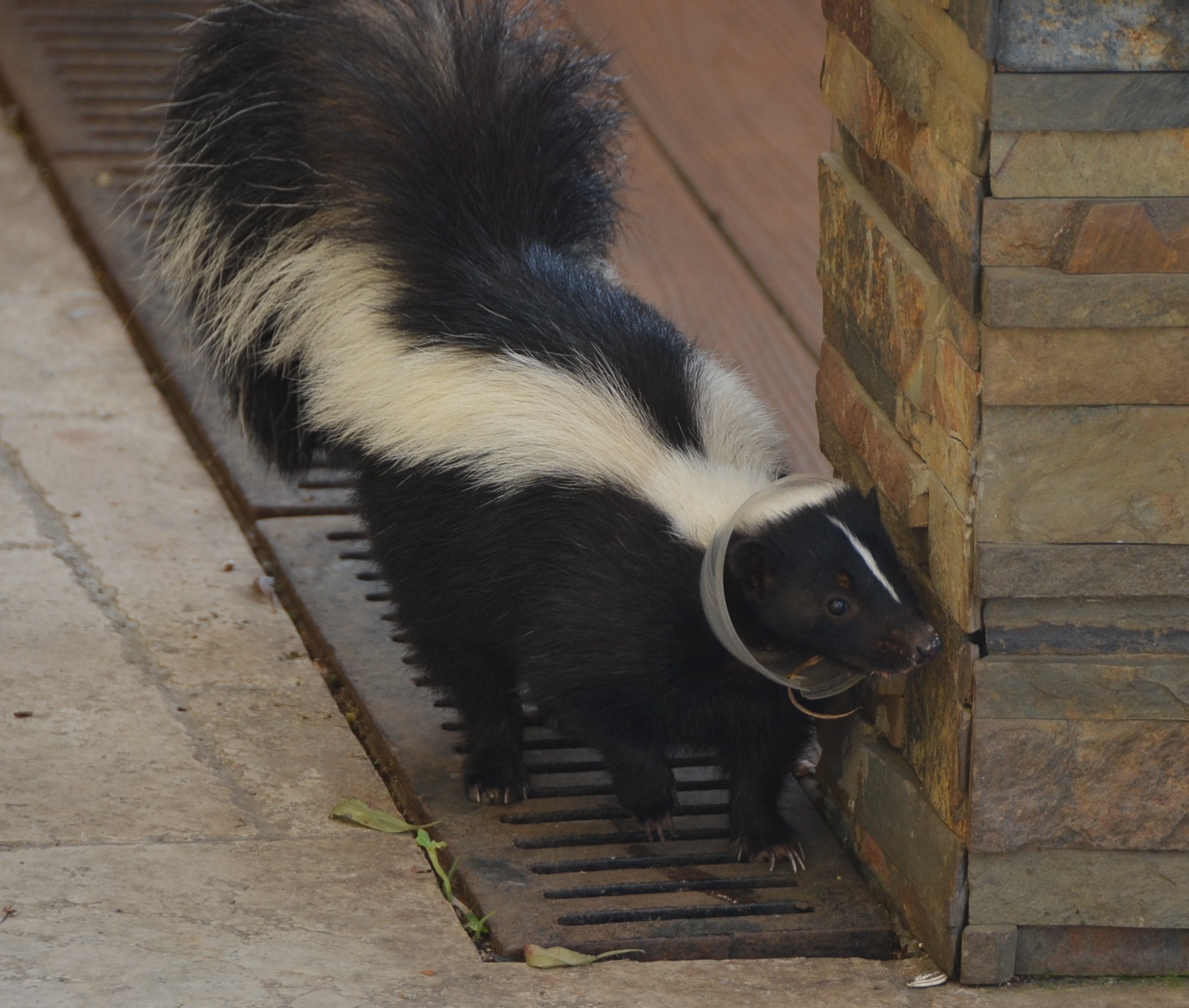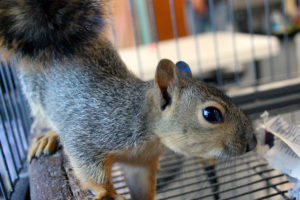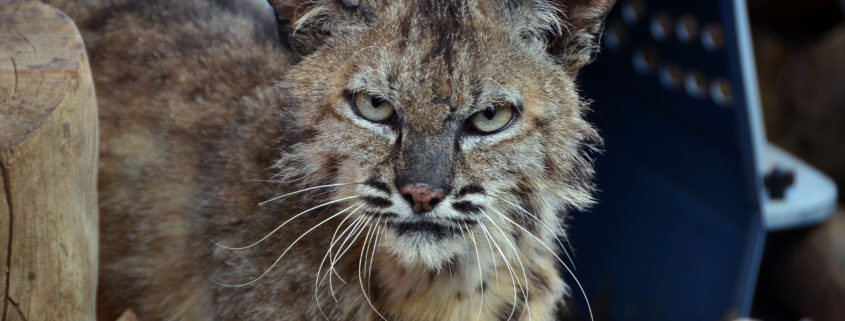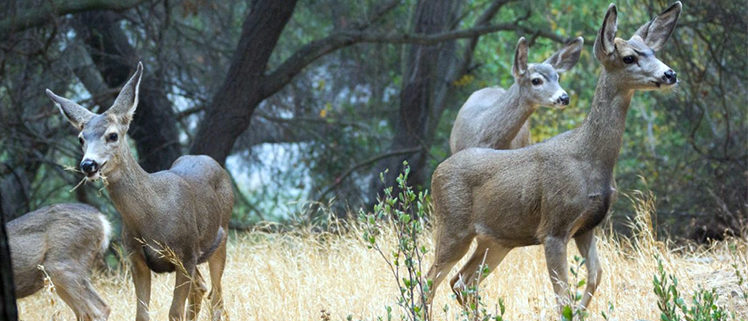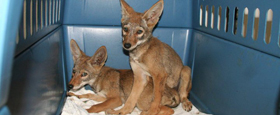By Staff Veterinarian Dr. Lorraine Barbosa
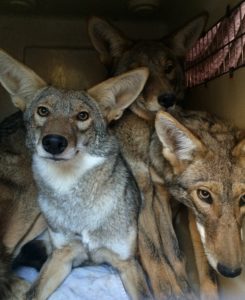
Coyotes peer out of their transport crate while on their way to their release location. Photo by Aileen Martinez
This year, California Wildlife Center took in seven orphaned coyote pups, which came to us from various locations in Topanga, Los Angeles, and Hollywood, at only a few months old. After treating them for a GI parasites, giving them their vaccinations, and providing them with nutrition and supportive care, they spent several months rehabilitating in our outdoor coyote enclosure with minimal human contact. Our goal is for them to form a pack so that when they are released, they will be able to find a defend a territory together.
In the wild, coyotes are born into a pack led by a monogamous male-female pair. Some youngsters will stay with their own packs while others will leave either to live on their own or in pairs, or to join another pack. Coyotes defend their territories together but rarely hunt together unless they need to bring down large prey. The size of their territory is dependent on the on the size of the pack and the food sources available. Coyotes often use natural and man-made structures as territory boundaries, which is why you may see lone coyotes walking along roadsides – they are keeping to the edge of a pack’s territory.
When releasing our coyotes, we try to find a location that has the natural resources they’ll need to survive, including free space, prey, and a water source. Without much human interaction over the past several months, these animals had grown very skittish of our presence, therefore, catching them up for transportation to their release location was a difficult task.
Peering in through the small opening of one enclosure, I could see only a jumble of ears, paws and noses protruding from a dense furred pile, each coyote looking away from me as if thinking, “if I can’t see you, you can’t see me.” With my Kevlar gloves on and a towel under my arm, I squatted down and began to crawl in, slowly and quietly, one small step at a time. I knew that if I could cover their faces, they would calm and I would be able to work with them more easily. While one coyote leaped repeatedly at a corner of the enclosure, another squeezed past me through the small enclosure door. I managed to cover two of the remaining coyotes with towels, keeping them quieted while Dr. Tom gathered the one that managed to sneak through, and then I wrestled with the coyote leaping at the enclosure corner. Once all were covered and stilled, moving them the several feet from the enclosure into their kennels was a whole other task. It seemed simple enough, but coyotes have an unparalleled ability to enhance normal gravitational forces, pressing themselves so hard into the ground that one would think they weighed ten times what they do. It took all of my strength to move a 26-pound coyote one foot forward at a time toward and then into the kennel. One by one, with a great deal of coordination, composure and effort, we were eventually able to get all seven coyotes into their kennels, injury-free. We drove the short distance to our release site, walked the kennels down the trail a ways, then opened the doors and watched them run off up and over the hill and out of sight.
